
Utterances poster
aims:
The aim of my project is to explore the relationship between text and image and the ways this is being considered by artists. The artists I have selected use varying methods to explore language and how this can be submitted visually, including prints, book-forms, and sculpture. I originally had the self and autobiography as themes but felt like this caused friction when contending with text/image practices and the library space; a crowd of ideas rather than an open concept. I believe the text and image project is much more open to differing practices and voices and fits within the library setting more evenly, which is something agreed upon with the artists involved.
I am communicating with artists at the moment about placement of artworks in the space and the initial intentions behind how these works are to be engaged with. This requires different methods of conversation around the pieces as some are more finished and static while another may be being materialised with its curatorial possibilities being more open. The library space can be quite limiting but I feel this is fitting in with my project idea as there is a necessity to be creative with the placement of works; it is important that works are both visible and connected to the spaces available in the library. This site-specific idea has become central to my project as I am interested in how this space can inform the artworks and change ideas of how they are meant to be engaged with.
This exhibition considers the library as a space of information, archive, readership and exchange. My approach to this is fairly democratic in facilitating meetings and discussion to explore possibilities in the space, creating an open pool of ideas and how/if the works can inform one another. It’s important these ideas go through library management to keep discussion open, ensuring low impact to the running of the library and to keep on top of what is or is not ok within the space. The documentation is a crucial aspect of this to maintain an open discourse between practices, artists, and their inevitable audiences. I will ‘capture’ this on a website I am building to carry these voices forward and keep Utterances as an evolving space that stretches beyond the library, perhaps as research tool and shifting knowledge?
The outcomes of the exhibition and website/social media is to create/continue debates of word/image in relation to curation, authorship, and the acts of reading and writing. What this means within larger contexts of art and literature. It is also interesting to think of the university setting as a place to make intersections between courses, examining differing or similar ways of creating/showing work.
promotion text:
What can be found between words and images?
Utterances brings together creatives who work with words and language as part of their practice, unravelling the acts of writing,reading and storytelling, locating ways these can be experienced by an audience. If writing is viewed as a vessel for description, and image to narrative, what new meanings can we collect from this space in-between.
Words can be observations, notes and messages to others, but what happens when they lose their meaning? When they become patterns on paper arranged for a visual encounter; typography conversing with visual art. Word-as-image interrogates what is between language and image; how we ‘see’ words and how this can change the function of text. Seeing words scribbled, etched, printed and painted unfastens fixed meanings to reveal suggestive words that can look like how they are muttered or heard. Utterances pulls words and images together to find connections amid various works and practices, library acting as lab for linguistic experiments.
Libraries are kinetic spaces that are always expanding; words and images are constantly being added to them all the time. Its multiplicity of voices, words, and images gathered and stored here highlight the space as one of information, archive, readership and exchange. Artworks exhibited here are utterances amongst systems, perspectives and knowledge; adding to an ever-changing shelf of ideas.
Spaces:
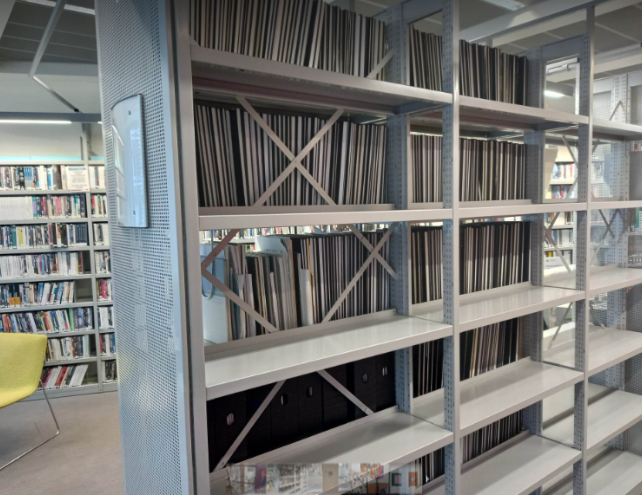
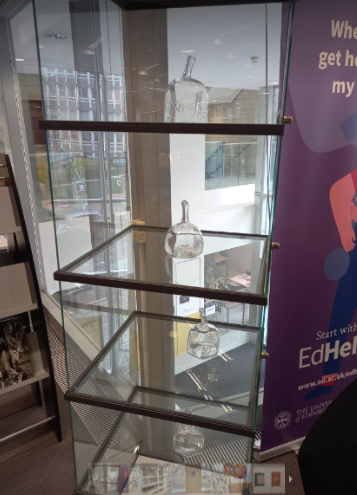
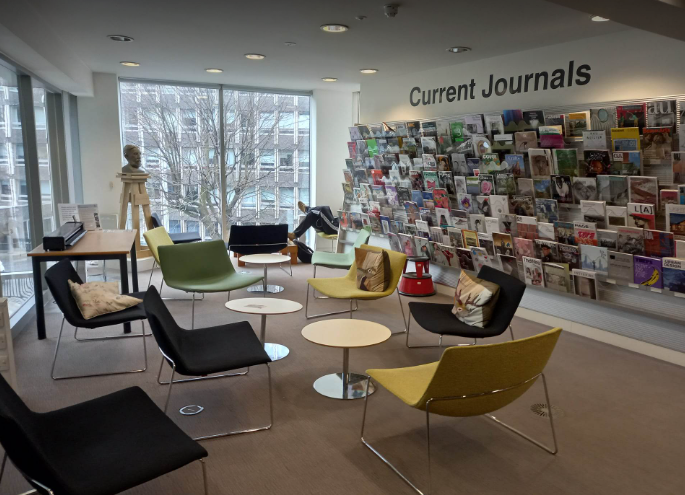
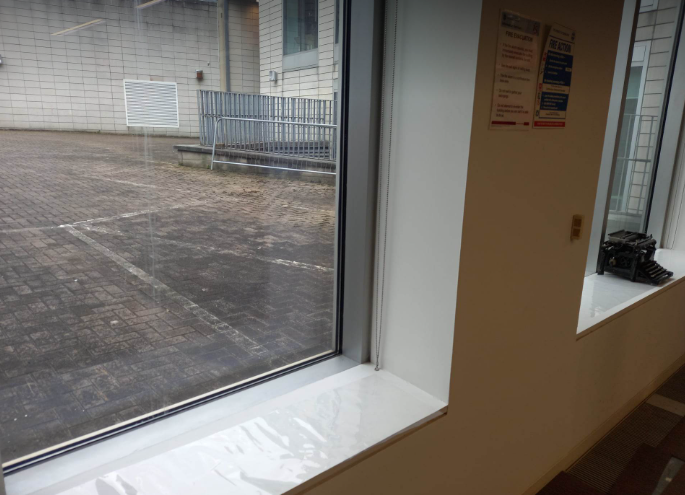
The exhibition will cover the 1st floor of the library only as: most useable spaces are on this level, its easier for people to navigate especially if they have not been in the space before, keeps any disturbance to people working within the library as the show is going on down to a minimum.
Realisation:
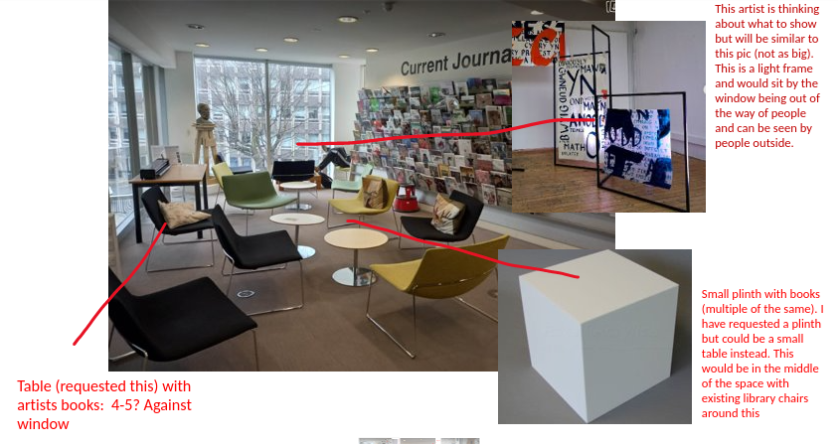
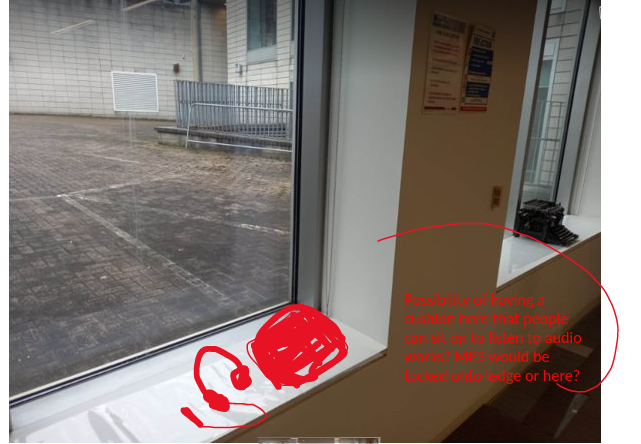
I have been communicating with Andrew Baxter, ECA library manager, mostly by email as back and forth conversations on what sections of the space are appropriate to hold artworks. I have been as clear as possible to avoid confusion, creating visuals of questions to make this process easier when not being able to meet in person. This has created four ‘obvious’ areas that lend themselves well to displaying artwork- communal area with chairs and magazines, poster display cases, empty shelves unit, ledge by window. This has also been a great way of communicating to multiple artists who have differing preferences to be contacted by, ensuring everyone has the same information.
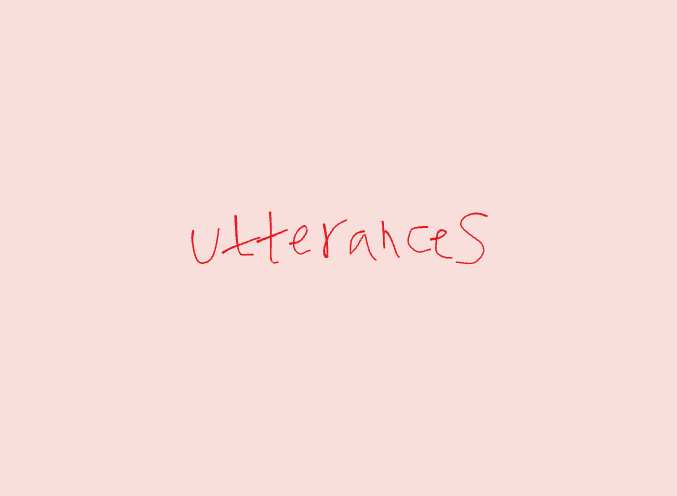


Leave a Reply